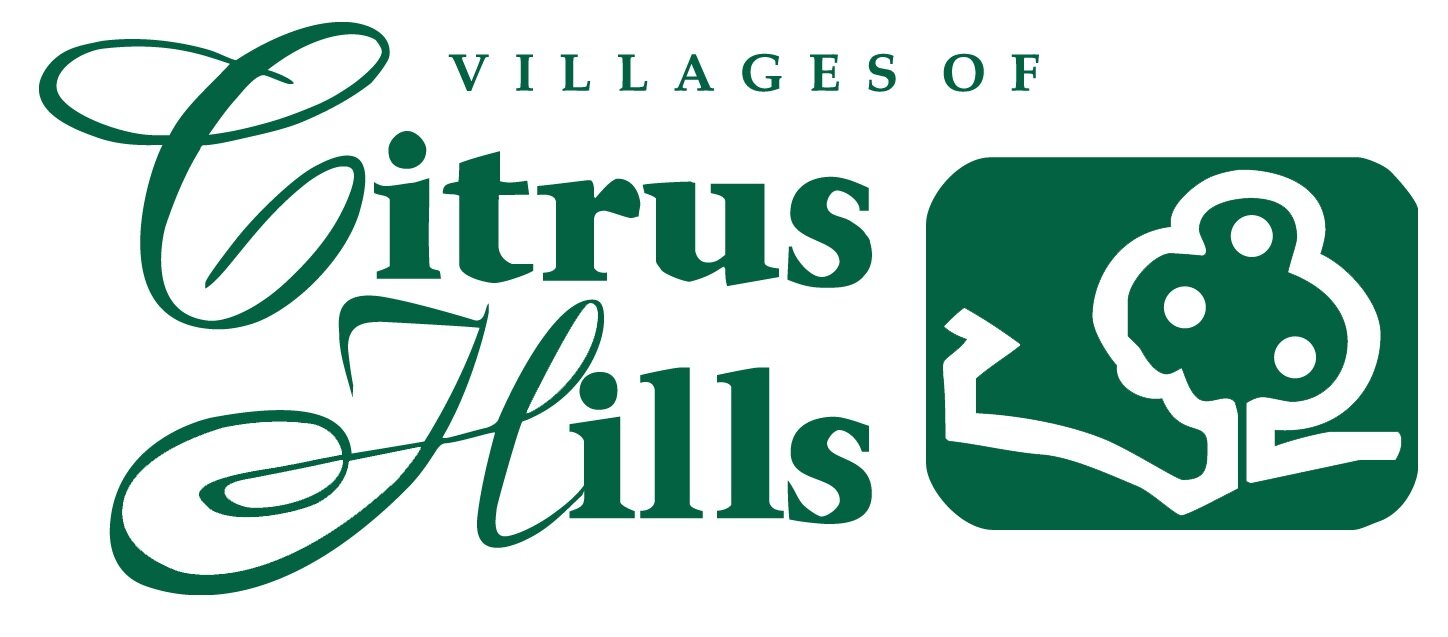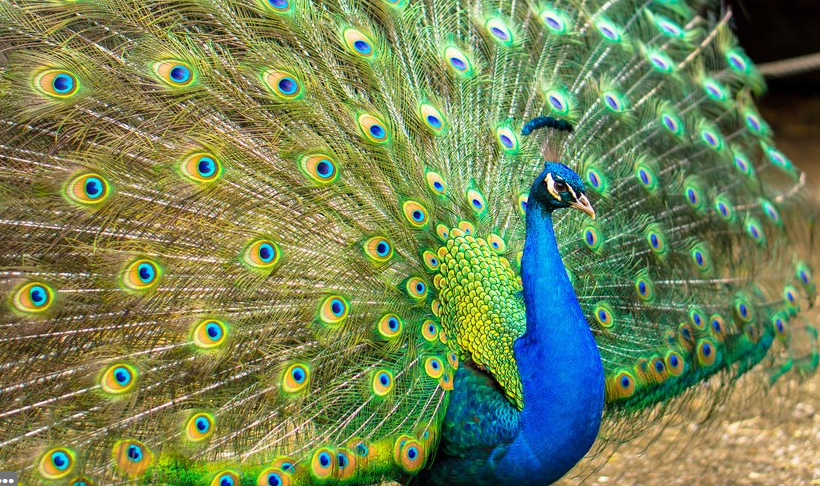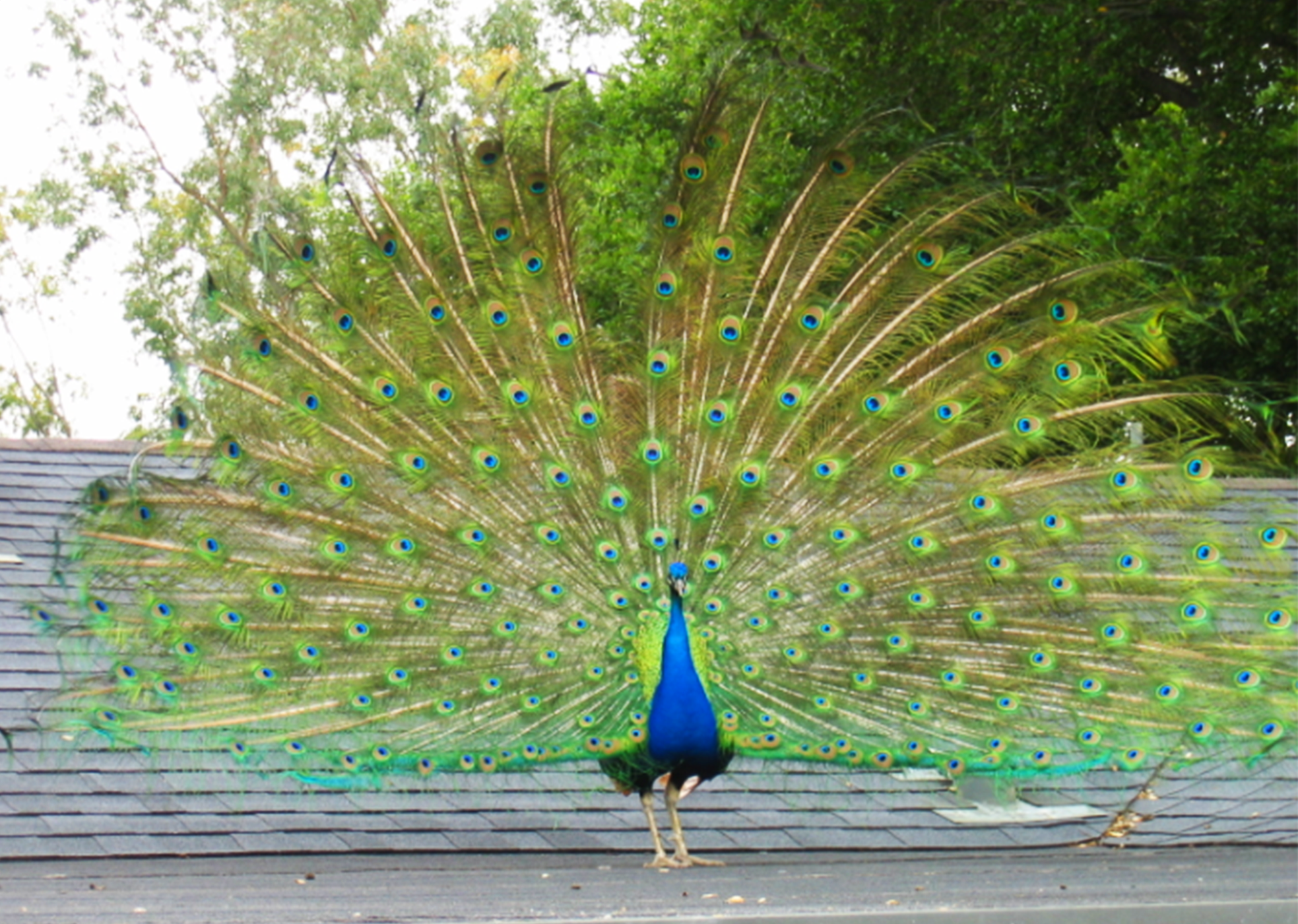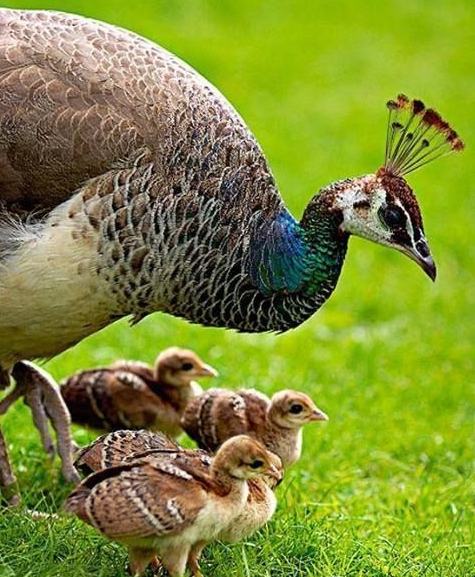When Florida comes to mind, you may think of beautiful white-sand beaches, or sunshine every day!
One thing that may not come to mind is our unsuspecting neighbor, coexisting with us here in the sunshine state, the peacock!
“Peacock” is a general term used to describe all species, but the specific peacock species we see in Florida is actually called “Peafowl,” and females are called “Peahens.”
In numerous counties across Florida, it is not uncommon to see wild peacocks on the side of the road as you’re driving to/from work, or even in your front yard sometimes!
For many Floridians this is an exciting occurrence that we look forward to.
Neighborly or Nuisance?
Most communities in Florida seem divided on whether peacocks are a nuisance, or a bit of natural beauty for the community.
That being said, there’s no question of the appeal the peacock brings to the human eye.
Between the unique contrast of black and white lines marking their faces, to the hypnotizing feather patterns of their tail feathers, it’s hard to resist the exotic beauty they bring to your neighborhood.
Many people say they’re good to have around when small children are playing outside, as residents tend to drive slower to avoid hitting them in the streets.
On the other hand, many neighbors do not like waking up every morning to a new friend in their front yard.
Especially during mating season, when their loud squawks can be heard from blocks away.
If you’re trying to sleep at night, and a 13-pound bird is walking on your roof, scratching on the ceiling, I’d imagine it would be frustrating.
Dangers
Being 160 miles across, at its widest points, Florida has many natural critters crossing the roads at different times of the year.
We see everything from turtles coming inland to lay their eggs, sand-hill cranes, wild turkeys, flamingos, pelicans, and as you now know, wild peacocks!
Many of these creatures are trying to either reach the two substantial surrounding bodies of water, the Atlantic Ocean and the Gulf of Mexico.
Others are trying to follow their natural instinct to travel in certain directions for migration, or scourging for food.
Floridians do try their best to protect the native creatures that cross the roads as much as possible, but that doesn’t mean they are always successful.
Traffic is a big threat to the wild peacocks roaming the streets, but it’s definitely not the biggest.
There are only few natural predators to these beautiful birds in the Florida area, such as coyotes or bobcats.
These threats don’t seem to hinder the population much at all, as there are no signs of these neighborly peafowl diminishing in numbers.
Reproduction
Peacocks in Florida usually mate between the February and July months, and lay an average of 6 eggs per season.
Peahens can not lay eggs until they are usually around 2 years old.
Peacock hatch-lings can usually be seen around this time as well, as it only takes 1 month on average for these hatch-lings to emerge from their eggs!
It’s an endearing sight to see the hatch-lings running around the community with their mothers watching close by.
Children love to go to local parks to feed baby peacocks treats like fruit, peanuts, or green vegetables, all of which directly contribute to a well-balanced peacock diet.
All in all, getting to choose where we want to live is easy when such unique wildlife surrounds our area.
Florida is already known for its wondrous beauty and amazing weather year-round.







